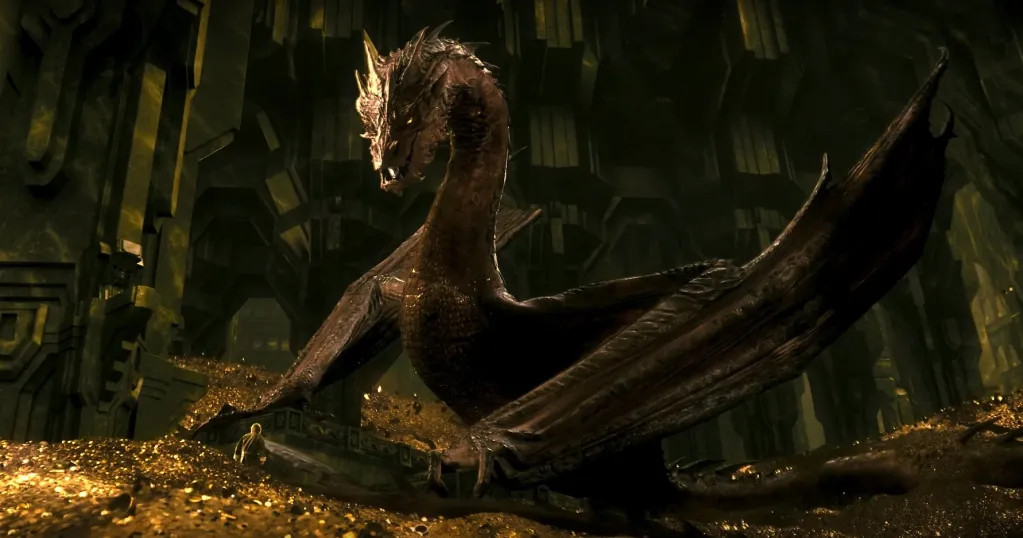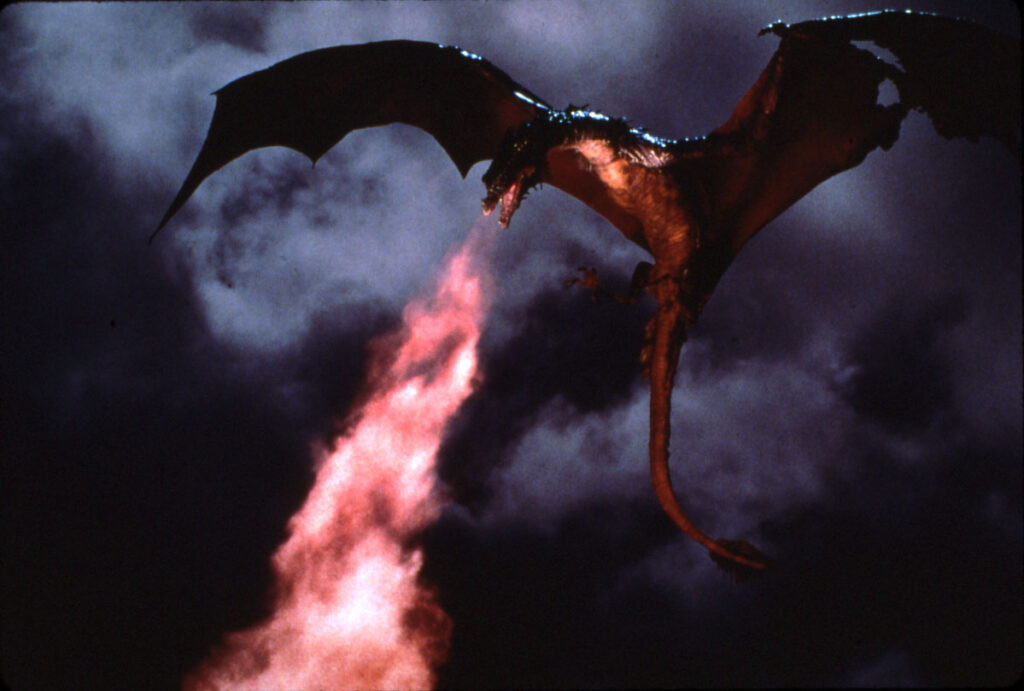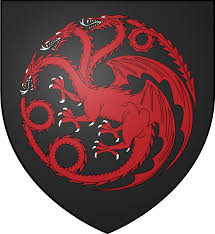The latest episode of House of the Dragon, “The Red Dragon and the Gold,” has set the fandom ablaze with spectacular dragon action. As dragon battles dominate the skies over Westeros, it’s natural to wonder about the might and mystique of these legendary creatures. Dragons have always held a special place in our imaginations, captivating us across cultures and throughout history. But in the world of A Song of Ice and Fire, George R.R. Martin has crafted dragons with a unique identity, deeply rooted in his vision of a gritty and grounded fantasy world.
 George R.R. Martin profile picture on his Not A Blog website
George R.R. Martin profile picture on his Not A Blog website
Dragons in Myth and Fantasy: A Legacy of Fire and Legend
From ancient myths to modern blockbusters, dragons have breathed fire into countless stories. Across the globe, cultures have embraced the dragon archetype, albeit with fascinating variations. Chinese dragons, for instance, are often depicted as benevolent, wingless symbols of good fortune, quite unlike their Western counterparts. Traditional Western dragons, however, are more akin to forces of nature – fire-breathing, destructive, and formidable.
Fantasy literature has further diversified the dragon narrative. From the noble creatures in Eragon to the endearing Toothless in How to Train Your Dragon, dragons have evolved beyond simple monsters. Even Tolkien, often considered the grandfather of modern fantasy, presented dragons like Smaug as intelligent but unequivocally evil, servants of darkness hoarding treasure and spreading terror.
 Toothless from How to Train Your Dragon, a friendly and different type of dragon compared to those in A Song of Ice and Fire
Toothless from How to Train Your Dragon, a friendly and different type of dragon compared to those in A Song of Ice and Fire
 Smaug from The Hobbit, a classic example of a Tolkien dragon, intelligent and guarding his hoard of gold
Smaug from The Hobbit, a classic example of a Tolkien dragon, intelligent and guarding his hoard of gold
Cinema has also contributed iconic dragon portrayals. Vermithrax Pejorative from Dragonslayer stands out as a realistic and menacing dragon, influencing dragon designs for years to come. In contrast, Dragonheart offered a gentler, talking dragon, showcasing the broad spectrum of dragon interpretations in popular culture.
 Vermithrax Pejorative from Dragonslayer, a realistic and dangerous dragon that inspired dragon lovers
Vermithrax Pejorative from Dragonslayer, a realistic and dangerous dragon that inspired dragon lovers
The Unique Dragons of A Song of Ice and Fire
Within A Song of Ice and Fire, dragons are neither mythical plot devices nor whimsical companions. Martin envisioned them as powerful creatures that fit into the relatively realistic framework of Westeros. Drawing inspiration from historical fiction and aiming for a world less overtly magical than many fantasy settings, he meticulously designed his dragons to feel as believable as possible.
Design and Realism: Two Legs and Large Wings
One of the defining features of dragons in A Song of Ice and Fire is their anatomy. Martin firmly established that Westerosi dragons possess two legs and two wings, with the wings acting as forelimbs, similar to bats or birds. He explicitly rejected the four-legged dragon design common in some fantasy works and heraldry, emphasizing that no Earth animal has ever naturally developed six limbs. This design choice grounds the dragons in biological plausibility, making them feel more like creatures that could exist within the natural laws of their world. Large wings are crucial for flight, contrasting with many depictions where dragons have wings seemingly too small to support their size.
Intelligence and Bond: Beasts, Not Pets
While intelligent, the dragons of Westeros are unequivocally beasts. They do not speak or engage in human-like conversations, setting them apart from dragons like Smaug or the dragon in Dragonheart. Instead, they form powerful bonds with certain individuals, a connection explored in depth in Fire & Blood and hinted at for future revelations in The Winds of Winter and A Dream of Spring. This bond allows for training and control to some extent, but dragons remain inherently wild and dangerous. Their personalities are individualistic and can even mirror those of their riders, highlighting the profound connection they share. Unlike traditional fantasy dragons hoarding gold, Westerosi dragons are indifferent to treasure, driven by more primal instincts.
Needs and Lairs: Grounded in Reality
Martin’s dragons are not immortal, ethereal beings. They are living creatures with biological needs. They require food, water, and air, just like any other animal. The fire they breathe demands oxygen, preventing them from prolonged underwater activity. While some fantasy dragons are depicted slumbering for decades, the dragons of Valyria are active creatures, requiring sustenance and attention. They are also territorial animals, establishing lairs, preferably in high places like mountaintops or volcanic peaks, reflecting their fiery nature. While they can be housed in man-made structures like the Dragonpit, their natural inclination is towards wild, open spaces.
Territorial and Non-Nomadic
Despite their ability to fly vast distances, dragons in A Song of Ice and Fire are not nomadic creatures. During the height of Valyria, dragons remained largely within the Freehold and its immediate territories. Similarly, in Westeros, dragons historically stayed close to Dragonstone and the Dragonpit. This territorial behavior prevents the world from being overrun by dragons and maintains a sense of geographical specificity, contributing to the grounded feel of Westeros. Dragons are not simply roaming freely across the lands; their presence is localized and significant.
The Targaryen Sigil Controversy: Two Legs or Four?
The meticulous detail in dragon design even extends to heraldry, becoming a point of contention for keen-eyed fans. Martin highlights the historical confusion surrounding dragon depictions, where heraldry sometimes incorrectly portrays dragons with four legs. He emphasizes that the correct Targaryen sigil, reflecting the actual anatomy of Westerosi dragons, should feature a two-legged dragon (or wyvern in heraldic terms).
He points out the inconsistency in the Game of Thrones series, where early seasons correctly depicted two-legged dragons in Targaryen sigils, only for later seasons and House of the Dragon to revert to the incorrect four-legged version. This deviation from established canon is a point of frustration for Martin, underscoring his commitment to consistency and detail within his created world.
RIGHT
 Correct two-legged dragon sigil of House Targaryen in A Song of Ice and Fire, as preferred by George R.R. Martin
Correct two-legged dragon sigil of House Targaryen in A Song of Ice and Fire, as preferred by George R.R. Martin
WRONG
 Incorrect four-legged dragon sigil of House Targaryen used in some Game of Thrones and House of the Dragon media, criticized by George R.R. Martin
Incorrect four-legged dragon sigil of House Targaryen used in some Game of Thrones and House of the Dragon media, criticized by George R.R. Martin
Grounding Fantasy in Believability
Ultimately, George R.R. Martin’s approach to dragons in A Song of Ice and Fire exemplifies his broader philosophy of fantasy world-building. By grounding even fantastical elements in a framework of internal consistency and a degree of realism, he creates a world that feels both wondrous and believable. The dragons of Westeros are not simply magical beasts; they are carefully considered creatures that enrich the intricate tapestry of A Song of Ice and Fire, adding depth and fire to this epic saga.

